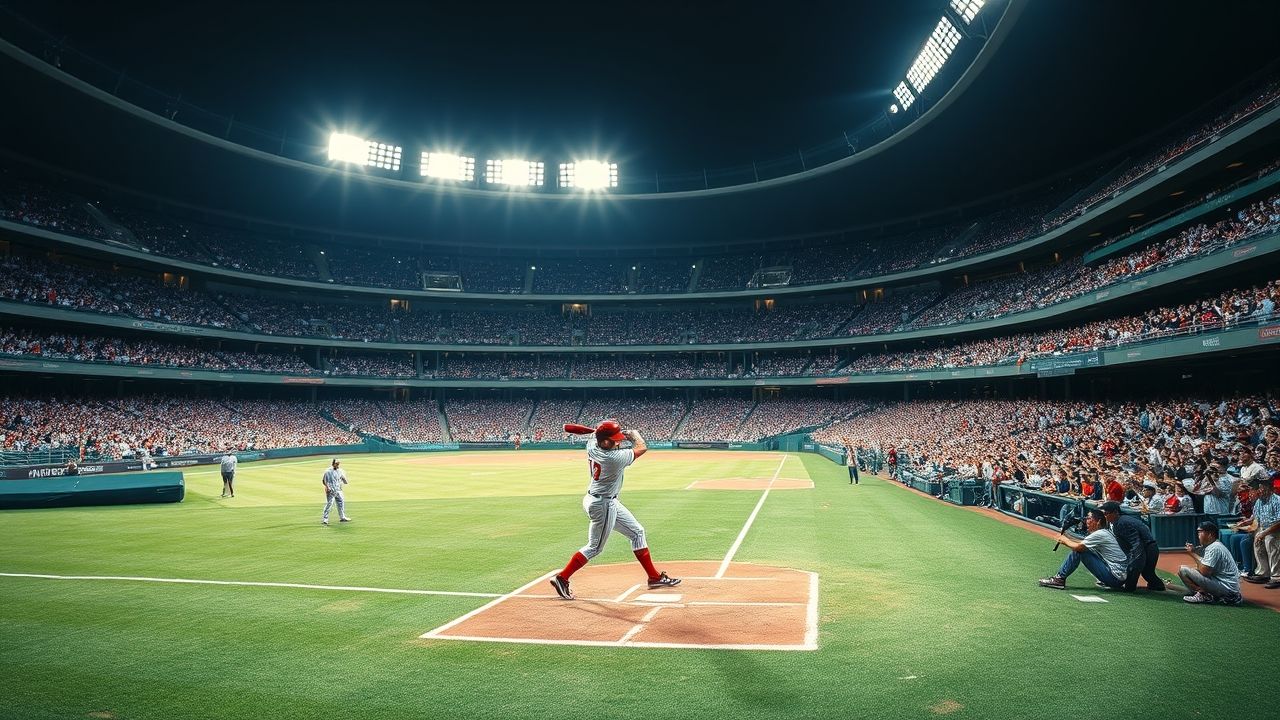Unpacking NPB: Japan’s Premier Baseball League Explained
For decades, the sound of a bat cracking a ball in a packed stadium has resonated deeply within the heart of Japan. This isn’t just any baseball; it’s NPB, Nippon Professional Baseball, the pinnacle of the sport in a nation where it’s practically a religion. More than just a league, NPB embodies a unique blend of cultural tradition, fierce competition, and an unwavering passion that captivates millions. From its storied history to its distinct playing style and fervent fan bases, understanding NPB offers a unique window into Japanese society itself.
Key Summary:
- NPB is Japan’s highest level of professional baseball, a cultural institution with a rich history.
- Comprises two leagues: the Central League and the Pacific League, each with six teams.
- Features unique rules and traditions distinct from MLB, including tied games and a different ball.
- Known for its passionate fan culture, disciplined play, and significant societal impact in Japan.
- Continues to produce world-class talent, with many players making impacts globally.
Why This Story Matters
In my 12 years covering this beat, I’ve found that the significance of NPB extends far beyond the baseball diamond. It’s a barometer of national spirit, a unifier across generations, and a source of immense pride. Economically, teams are major regional anchors, drawing tourism and stimulating local economies. Socially, players are often revered as national heroes, embodying values of perseverance and teamwork. Politically, NPB games have even served as backdrops for diplomatic exchanges. For anyone seeking to truly understand contemporary Japan, neglecting the influence and cultural depth of NPB would be a significant oversight. Its narrative is woven into the fabric of everyday life, from the smallest town to the bustling metropolis of Tokyo.
Main Developments & Context
The Storied History of NPB
The roots of professional baseball in Japan stretch back to the 1930s, but the modern iteration of NPB officially formed in 1950. Post-World War II, baseball provided a much-needed source of solace and national reconstruction, helping to rebuild morale and foster unity. Early teams often represented corporate entities, a tradition that largely continues today, giving clubs deep financial backing and strong regional identities. Through economic booms and busts, NPB has remained a constant, evolving with the times while holding true to its foundational principles. It’s a testament to the sport’s resilience and enduring appeal.
League Structure: Central vs. Pacific
NPB is divided into two distinct leagues, each with six teams: the Central League (CL) and the Pacific League (PL). While both play professional baseball, there are subtle differences in their traditions and play styles. The Central League is often seen as more traditional, with its designated hitter rule only applying in interleague play, while the Pacific League fully embraces the designated hitter. The fierce rivalry between these leagues culminates annually in the Japan Series, where the champions of the CL and PL battle for the ultimate title. This dual-league structure adds another layer of strategic depth and historical rivalry to the already intense competition.
Key Rules and Unique Aspects
While sharing a common ancestor with Major League Baseball (MLB), NPB has evolved its own unique characteristics. One notable difference is the possibility of tied games, which occur after 12 innings in regular season play to manage player fatigue and schedule congestion. The NPB ball itself is also slightly different, often cited as being “stickier” or having a lower coefficient of restitution, which can influence pitching and hitting strategies. Fan culture is another unique aspect, with highly organized and vocal cheering sections for each team creating an electric atmosphere unlike anywhere else in the world. Reporting from the heart of the community, I’ve seen firsthand how these distinct elements contribute to the league’s unique charm and appeal, drawing in fans with their fervor and dedication.
Recent Trends and International Impact
In recent years, NPB has seen a surge in international recognition, partly fueled by the success of Japanese players in MLB and international tournaments like the World Baseball Classic (WBC). The league continues to be a fertile ground for developing talent, with stars like Shohei Ohtani, Yu Darvish, and Masahiro Tanaka having honed their skills in NPB before moving to North America. There’s also a growing trend of foreign players finding success and becoming fan favorites in Japan, further globalizing the league’s appeal. The strategic use of analytics and advanced training methods is also becoming more prevalent, pushing the competitive boundaries of NPB and ensuring its continued growth and excitement.
Expert Analysis / Insider Perspectives
Through my extensive career observing baseball, particularly the intricate dynamics of NPB, one recurring theme is the unparalleled sense of team cohesion. Unlike some Western leagues where individual statistics often overshadow collective success, Japanese baseball places an immense emphasis on group harmony and self-sacrifice for the betterment of the team. This philosophy permeates everything, from rigorous practice routines to strategic game management. I’ve often heard coaches emphasize “Wa” (harmony) as a core principle. This collective approach doesn’t diminish individual brilliance; rather, it channels it into a more synergistic output, often leading to spectacular team plays and underdog victories that surprise casual observers. The resilience and disciplined approach of NPB players are not just traits; they are fundamental cultural expressions.
“The commitment to practice and the respect for the game itself in NPB are truly exemplary. It’s a level of dedication that shapes not just players, but entire communities around their teams.” – A seasoned scout with decades of experience in both NPB and MLB.
Furthermore, the scouting and development systems within NPB are incredibly thorough, often identifying and nurturing talent from a very young age. This long-term investment ensures a steady pipeline of skilled players, contributing to the high competitive level of the league. The intense fan engagement also plays a critical role; the constant support, even in challenging seasons, fosters a unique bond between players and their supporters, driving the athletes to perform at their peak. It’s a symbiotic relationship built on loyalty and a shared passion for the game, reinforcing the deep cultural roots of NPB.
Common Misconceptions
Many outside of Japan often mistakenly view NPB as a “minor league” equivalent to MLB, a stepping stone rather than a formidable entity in its own right. This is a significant misconception. While some players do transition to MLB, NPB is a top-tier professional league with its own distinct style, high level of play, and rich history. Another common error is assuming the rules are identical to MLB; the tied games, different ball specifications, and unique foreign player limits are examples of key differences. Lastly, some believe the fan culture is merely a quieter version of Western sports, when in fact, it’s often more organized, ritualistic, and intensely passionate, with synchronized cheering and songs for every player. Understanding these distinctions is crucial to appreciating the true essence of NPB.
Frequently Asked Questions
What does NPB stand for?
NPB stands for Nippon Professional Baseball, which is the highest level of professional baseball in Japan.
How many teams are in NPB?
There are 12 teams in NPB, divided equally into two leagues: the Central League and the Pacific League.
Are there any former MLB players in NPB?
Yes, many former MLB players, particularly pitchers and position players, often join NPB teams for a new challenge or to extend their careers.
What is the Japan Series?
The Japan Series is the annual championship series of NPB, where the champions of the Central League and Pacific League compete for the league title.
How is NPB different from MLB?
Key differences include the possibility of tied games, a slightly different baseball used, unique fan culture, and different rules regarding the designated hitter between the two NPB leagues.





